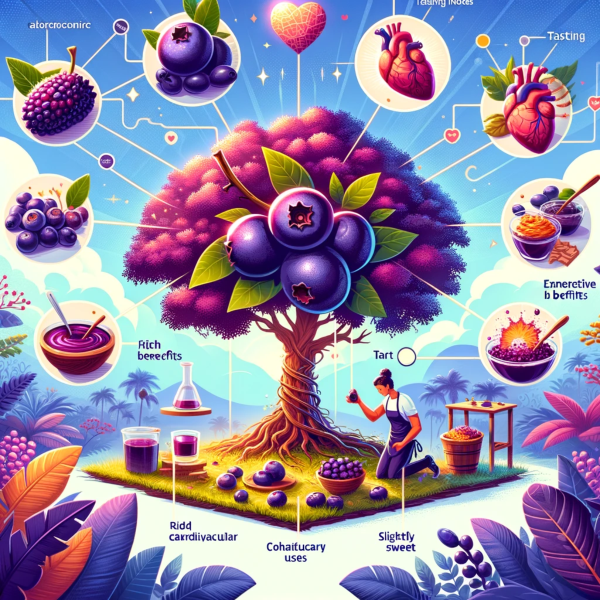When you think of pumpkins, what comes to mind? For most people, it's probably jack-o'-lanterns or pumpkin pie. But have you ever wondered what category pumpkins actually fall into? Are they a fruit, a vegetable, or perhaps something else entirely?
Technically speaking, pumpkins are a type of fruit. Yes, you read that right – a fruit! In botanical terms, a fruit is the mature ovary of a flowering plant, typically containing seeds. Pumpkins fit this definition perfectly, as they develop from the fertilized flowers of the pumpkin vine. So, next time you're carving a pumpkin, remember that you're actually working with a fruit!
But wait, you might be thinking, aren't pumpkins more like vegetables? After all, they're not sweet like other fruits, and they're often used in savory dishes. Well, you're not wrong. In culinary terms, pumpkins are often classified as vegetables. This is because they are typically cooked and used in savory dishes, rather than being eaten raw or used in sweet desserts. So, while they may be a fruit botanically, they can also be considered a vegetable from a culinary perspective.
how to wash a hat
And here's another twist to the pumpkin puzzle – did you know that pumpkins are technically berries? Yes, it's true! Botanically speaking, a berry is a fleshy fruit that develops from a single ovary and contains seeds. Pumpkins fit this definition as well, as they are fleshy, develop from a single ovary, and contain seeds. So, if you want to get technical, you can call pumpkins berries!
See Also: A Complete Guide to Selecting the Healthiest Yogurt Brands and Varieties
Pumpkin: Fruit, Vegetable, or Something Else?
When it comes to categorizing pumpkins, there seems to be some confusion. Is it a fruit, a vegetable, or something else entirely? The answer may surprise you.
Botanically speaking, pumpkins are classified as a fruit. This is because they develop from the ovary of a flower and contain seeds. In fact, pumpkins are a type of winter squash, which are all classified as fruits.
However, in culinary terms, pumpkins are often considered a vegetable. They are commonly used in savory dishes, such as soups, stews, and roasted vegetables. Pumpkins are also used in desserts, like pies and breads, but their association with sweet flavors doesn't change their botanical classification.
It's worth noting that the term 'vegetable' is not a scientific classification, but rather a culinary one. In general, fruits are considered to be sweet and used in desserts, while vegetables are savory and used in main dishes. Pumpkins challenge this distinction, as they are versatile enough to be used in both sweet and savory dishes.
So, the next time you enjoy a slice of pumpkin pie or a bowl of pumpkin soup, remember that the pumpkin is technically a fruit, but it can also be considered a vegetable depending on how it is used in the kitchen. Regardless of how you classify it, one thing is certain – pumpkins are delicious!
| Botanical Classification | Culinary Classification |
|---|---|
| Fruit | Vegetable |
| Develops from the ovary of a flower | Used in savory and sweet dishes |
| Contains seeds | Versatile ingredient |
Are pumpkins fruits or vegetables?
Pumpkins are a type of fruit. Botanically speaking, fruits are the mature ovaries of flowering plants that contain seeds. Pumpkins fit this definition because they develop from the blossoms of pumpkin plants and contain seeds inside.
However, in culinary terms, pumpkins are often referred to as vegetables. This is because they are typically cooked and used in savory dishes, such as pumpkin soup or roasted pumpkin. Pumpkins are also commonly used in baking sweet treats such as pumpkin pie and pumpkin bread.
So, while pumpkins may be considered fruits from a botanical perspective, they are commonly referred to as vegetables in the culinary world. Regardless of how they are classified, pumpkins are a versatile and delicious addition to many dishes.
The Relationship Between Pumpkins and Squash
Pumpkins and squash are closely related members of the Cucurbitaceae family, which also includes cucumbers, melons, and gourds. In fact, pumpkins are a type of squash, specifically a member of the Cucurbita genus.
There are several different species of squash, including Cucurbita pepo, Cucurbita maxima, and Cucurbita moschata. Pumpkins belong to the Cucurbita pepo species, along with other types of squash such as zucchini and acorn squash.
While pumpkins and squash share many similarities, there are also some key differences between the two. Pumpkins tend to be larger and rounder in shape, with a thicker skin and sweeter flavor compared to other types of squash. Squash, on the other hand, can have a variety of shapes, sizes, and flavors, ranging from sweet to savory.
Both pumpkins and squash are highly versatile in the kitchen and can be used in a wide range of dishes. They can be roasted, pureed, used in soups, baked into pies, or even turned into savory dishes like stuffed squash. Additionally, both pumpkins and squash are rich in nutrients, such as vitamin A, vitamin C, and fiber.
In conclusion, while pumpkins and squash are closely related, pumpkins are a specific type of squash. They share many similarities but also have distinct differences in shape, flavor, and culinary uses.
How are squash and pumpkin related?
Squash and pumpkin are both members of the Cucurbitaceae family, which also includes cucumbers, melons, and gourds. They are related through common ancestry and share similar characteristics.
Both squash and pumpkin belong to the genus Cucurbita, but they are different species. Squash refers to a variety of plants that belong to the Cucurbita genus, including summer squash, winter squash, and zucchini. Pumpkin, on the other hand, specifically refers to certain cultivars of winter squash that are typically round, orange, and used for culinary purposes or decoration during Halloween.
how to wash a hat
Despite their differences, squash and pumpkin have many similarities. They have a similar growth habit, with sprawling vines and large, lobed leaves. Both plants produce flowers that are typically yellow and have separate male and female blooms. The fruits of both squash and pumpkin develop from the female flowers and have a similar structure, with a thick, hard rind and fleshy interior.
In terms of taste and culinary use, squash and pumpkin are often used interchangeably in recipes. They have a similar flavor profile and can be used in both savory and sweet dishes. Squash and pumpkin are also rich in vitamins and minerals, making them a nutritious addition to any diet.
In conclusion, squash and pumpkin are closely related members of the Cucurbitaceae family. While they belong to the same genus, they are different species. However, they share many characteristics and are often used interchangeably in cooking. So whether you're enjoying a delicious pumpkin pie or a comforting bowl of butternut squash soup, you can appreciate the close relationship between these two versatile vegetables.
What is the difference between squash and pumpkin?
Squash and pumpkin are both members of the gourd family and are similar in many ways. However, there are a few key differences that set them apart.
One major difference is their taste. Pumpkins are typically sweeter and have a stronger flavor, while squash tends to have a milder taste. This difference in flavor makes pumpkins a popular choice for sweet dishes like pumpkin pie, while squash is often used in savory dishes.
Another difference is their appearance. Pumpkins are typically round and have a thick, hard skin, while squash can come in a variety of shapes and sizes. Squash also tends to have a softer, thinner skin that is edible, while the skin of a pumpkin is usually discarded.
When it comes to texture, pumpkins and squash also differ. Pumpkins are known for their smooth, creamy flesh, while squash can have a more fibrous texture. This difference in texture can affect how they are cooked and used in recipes.
Lastly, pumpkins and squash have different nutritional profiles. Pumpkins are rich in vitamins A and C, as well as fiber, while squash is high in vitamins A and E. Both vegetables are low in calories and a good source of antioxidants.
In conclusion, while squash and pumpkin are similar in many ways, including being members of the gourd family, they differ in taste, appearance, texture, and nutritional content. Understanding these differences can help you choose the right ingredient for your next recipe.
Are Pumpkins Berries? Exploring Botanical Classifications
When it comes to classifying fruits and vegetables, things can get a little confusing. Take pumpkins, for example. They are often associated with the fall season and Halloween, but are they really vegetables? And what about berries?
In botanical terms, a berry is a fleshy fruit that develops from a single ovary and contains seeds. By this definition, pumpkins can be considered berries. They have a hard outer rind and a fleshy interior, which is characteristic of many berries.
However, in culinary terms, pumpkins are typically categorized as vegetables. This is because they are typically cooked and eaten as savory dishes, rather than being used in sweet desserts like most berries. Pumpkins are also commonly grouped with other vegetables, such as squash and gourds.
So, while pumpkins may meet the botanical criteria for being a berry, they are not commonly referred to as such in everyday language. Instead, they are more commonly known as a type of vegetable.
It's important to note that botanical classifications can sometimes differ from culinary classifications. This is because culinary classifications are often based on how a particular ingredient is used in cooking, rather than its botanical characteristics.
In conclusion, pumpkins can technically be considered berries from a botanical perspective, but they are more commonly categorized as vegetables in culinary terms. So, the next time you enjoy a pumpkin dish, you can impress your friends with your knowledge of its botanical classification!
What category does a pumpkin fall under?
A pumpkin is a fruit, although many people mistakenly categorize it as a vegetable. Fruits are defined as the mature ovaries of flowering plants that develop after pollination. Pumpkins meet this definition as they are the mature ovaries of pumpkin flowers.
One common misconception is that fruits are always sweet, while vegetables are savory. However, this is not the case. Fruits can be sweet or savory, depending on their natural sugar content. Pumpkins, for example, have a mild sweetness to them, but they are not as sugary as other fruits like strawberries or oranges.
Another misconception is that vegetables are typically consumed in savory dishes, while fruits are used in sweet dishes. While this may be true for some fruits and vegetables, it is not a strict rule. Pumpkins can be used in a variety of dishes, both sweet and savory. They are often used in sweet desserts like pumpkin pie or savory dishes like pumpkin soup.
In conclusion, pumpkins are fruits. They may not fit the typical image of a fruit, but they meet the botanical definition. So next time you enjoy a pumpkin dish, remember that you are indulging in a delicious fruit!
Is a pumpkin a botanical fruit?
When it comes to categorizing plants, the distinction between fruits, vegetables, and berries can sometimes be confusing. In botanical terms, a pumpkin is actually classified as a fruit.
In botany, fruits are defined as the mature ovaries of flowering plants, which develop from fertilized flowers. Pumpkins belong to the Cucurbitaceae family, which also includes other familiar fruits like cucumbers, melons, and squash.
Technically, pumpkins are a type of berry known as a pepo. A pepo is a fleshy fruit with a hard rind and many seeds. Other examples of pepo fruits include watermelons and cucumbers.
Although we often think of pumpkins as vegetables due to their culinary uses, they are botanically classified as fruits. This is because they develop from the ovaries of a flower and contain seeds. In fact, pumpkins are considered a type of botanical berry!
So, the next time you carve a pumpkin for Halloween or enjoy a slice of pumpkin pie, remember that you are indulging in a delicious botanical fruit!
Squash vs. Pumpkin: Identifying Differences and Similarities
While both squash and pumpkin belong to the same family, Cucurbitaceae, they have distinct characteristics that set them apart. Understanding the differences and similarities between squash and pumpkin can help you make informed choices in the kitchen and garden.
Shape: One of the easiest ways to distinguish between squash and pumpkin is their shape. Squash generally have a more elongated and cylindrical shape, while pumpkins are rounder and have a more pronounced ribbed texture.
Color: Squash come in a variety of colors, ranging from green and yellow to orange and even striped. Pumpkins, on the other hand, are typically bright orange, although some varieties can also be found in shades of green, white, or even blue-gray.
Texture: Squash and pumpkin also differ in terms of their texture. Squash tends to have a firmer and denser texture, while pumpkins are often softer and more moist.
Flavor: When it comes to flavor, squash and pumpkin both have a naturally sweet taste, but there are some variations. Squash tends to have a nuttier and earthier flavor, while pumpkins have a milder and slightly sweeter taste.
Usage: Squash and pumpkin can be used interchangeably in many recipes, but there are some differences in usage. Squash is often preferred for savory dishes such as soups, stews, and roasted vegetables, while pumpkins are commonly used in sweet recipes like pies, breads, and desserts.
- Squash varieties include butternut, acorn, and spaghetti squash.
- Pumpkin varieties include sugar pie, Cinderella, and white pumpkins.
Harvesting: Squash and pumpkins are typically harvested at different times. Squash is usually picked when it reaches maturity, which can vary depending on the variety. Pumpkins, on the other hand, are typically harvested in the fall when their skin has hardened and their color has fully developed.
steam cleaner
Planting and Growing: Squash and pumpkins have similar planting and growing requirements. They both thrive in warm climates with plenty of sunlight and well-drained soil. However, pumpkins tend to require more space to spread out and grow, while squash can be grown in smaller spaces or containers.
In conclusion, while squash and pumpkin are closely related, they have distinct differences in terms of shape, color, texture, flavor, usage, harvesting, and growing requirements. Understanding these differences can help you make the most of both squash and pumpkin in your cooking and gardening endeavors.
How are pumpkin and squash similar?
Pumpkin and squash are both members of the Cucurbitaceae family, which also includes cucumbers, melons, and gourds. They are similar in many ways:
| Appearance | Pumpkin and squash have a similar shape, with a round or oblong form and a thick, hard skin. They come in a variety of colors, including orange, yellow, green, and even white. |
| Taste | Both pumpkin and squash have a mild, sweet flavor. They can be used in both sweet and savory dishes, making them versatile ingredients in the kitchen. |
| Texture | When cooked, both pumpkin and squash have a soft and smooth texture. They can be mashed, pureed, or roasted, depending on the desired dish. |
| Nutritional Value | Pumpkin and squash are both low in calories and high in fiber, vitamins, and minerals. They are a good source of vitamin A, vitamin C, potassium, and antioxidants. |
| Culinary Uses | Both pumpkin and squash can be used in a variety of culinary preparations, such as soups, stews, pies, breads, and desserts. They are a staple ingredient in many traditional dishes around the world. |
Overall, pumpkin and squash share many similarities in terms of appearance, taste, texture, nutritional value, and culinary uses. Whether you're enjoying a pumpkin pie or a butternut squash soup, you can appreciate the delicious and versatile qualities of these Cucurbitaceae family members.
How do you tell a squash plant from a pumpkin plant?
While squash and pumpkin plants may look similar, there are a few key differences that can help you tell them apart.
Leaves: One way to distinguish between squash and pumpkin plants is by examining their leaves. Squash plants typically have more lobed leaves, with deep indentations and pronounced peaks, while pumpkin plants tend to have smoother leaves with fewer lobes.
Flowers: Another way to differentiate between squash and pumpkin plants is by looking at their flowers. Squash plants often have both male and female flowers on the same plant, while pumpkin plants usually have separate male and female flowers. The female flowers of squash plants have a small fruit at the base, while pumpkin plants have a larger, more rounded fruit.
annual vs perennial
Growth habit: Squash plants tend to have a more sprawling growth habit, with vines that can spread out in different directions. Pumpkin plants, on the other hand, tend to have a more compact growth habit, with shorter vines that stay closer to the main plant.
Fruit: The most obvious difference between squash and pumpkin plants is, of course, the fruit they produce. Squash plants typically produce a variety of shapes, sizes, and colors of fruit, including zucchini, acorn squash, and butternut squash. Pumpkin plants, on the other hand, produce larger, rounder fruit with a hard outer shell and a bright orange color.
So, whether you're growing squash or pumpkins in your garden, these tips can help you determine which plants you have and enjoy the unique qualities of each.
Q&A:
Is a pumpkin a fruit or a vegetable?
A pumpkin is actually a fruit.
Why is a pumpkin considered a fruit?
A pumpkin is considered a fruit because it develops from the flower of the pumpkin plant and contains seeds.
Can you eat a pumpkin?
Yes, pumpkins are edible and can be used in a variety of savory and sweet dishes.
Is a pumpkin a type of berry?
No, a pumpkin is not considered a berry. It is classified as a fruit.
What are some popular dishes made with pumpkin?
Some popular dishes made with pumpkin include pumpkin pie, pumpkin soup, and roasted pumpkin seeds.
Is a pumpkin a fruit or a vegetable?
A pumpkin is technically a fruit because it develops from the flower of the pumpkin plant and contains seeds. However, it is often referred to as a vegetable because it is commonly used in savory dishes.
Why are pumpkins sometimes considered berries?
Pumpkins are sometimes considered berries because they are classified as a type of fruit that develops from a single ovary and contains seeds. Botanically speaking, berries can include fruits that are not typically thought of as berries in everyday language.
What are the characteristics of a fruit?
A fruit is the mature ovary of a flowering plant, typically containing seeds. It develops from the fertilized flower and often has a sweet or savory flavor. Fruits can be classified into different types, including berries, drupes, pomes, and more.
Why are pumpkins commonly used in both sweet and savory dishes?
Pumpkins have a mild, slightly sweet flavor that makes them versatile in cooking. They can be used in sweet dishes like pies and desserts, as well as savory dishes like soups and stews. Their texture and taste lend well to a variety of culinary applications.
Are there any other fruits or vegetables that are commonly misclassified?
Yes, there are several fruits and vegetables that are commonly misclassified. For example, tomatoes are technically a fruit but are often referred to as a vegetable. Similarly, avocados are classified as a fruit but are commonly thought of as a vegetable due to their culinary uses.





